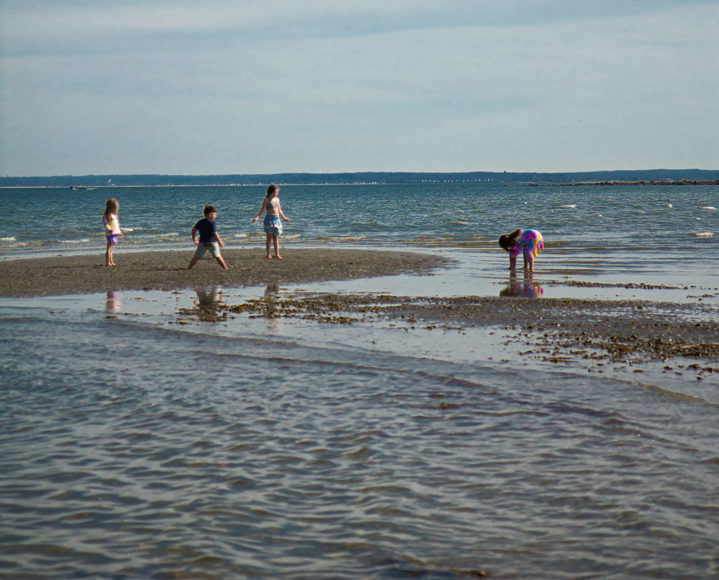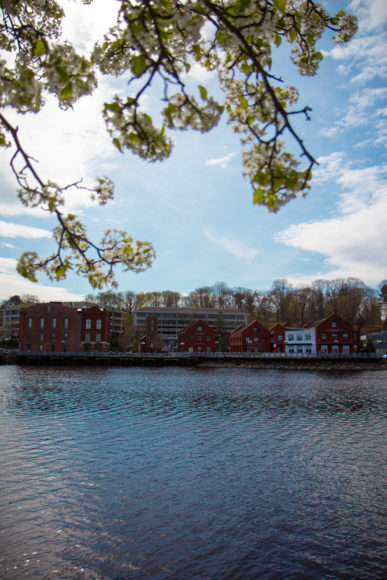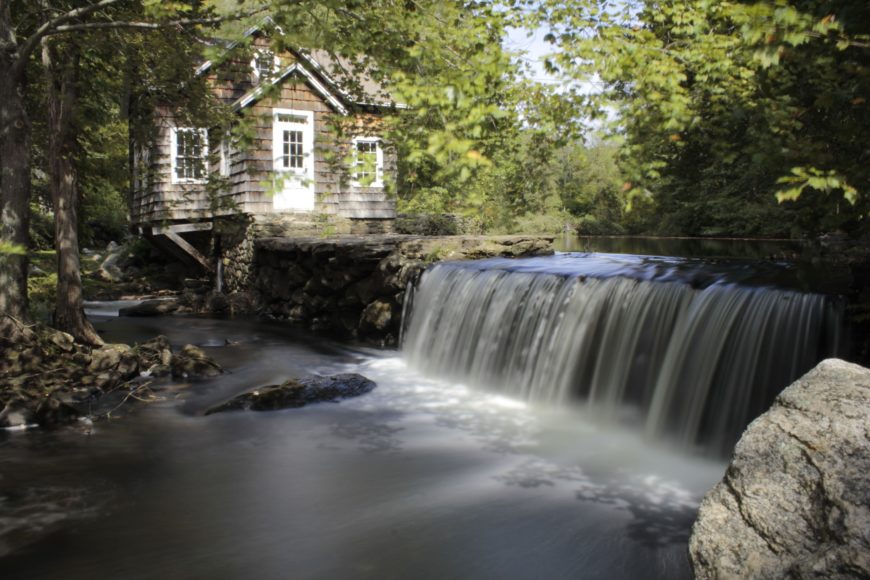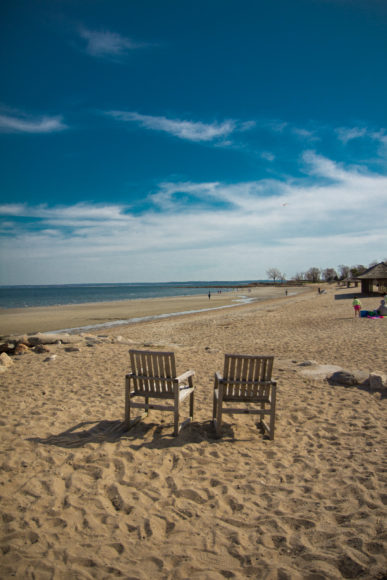Several years ago, I took a summer flight from Tallahassee, Florida, to Westchester County Airport that, through a series of misadventures, required 12 hours instead of the usual two. With traffic backed up over the airport, our pilot headed north, noting a quilt of greenery that offset the light-dappled water and cerulean sky. The brown swampiness of Tallahassee fresh in my mind, along with the half-day ordeal, I was grateful to be almost home, seeing its environs as if for the first time.
“I never realized how beautiful this place is,” I said to my seatmate.
“This place” is “Connecticut’s Gold Coast,” as the southern or lower portion of Fairfield County is known. From Greenwich through Stamford, Darien, Norwalk, Westport, Fairfield and parts of Bridgeport to Stratford; and inland from New Canaan through Wilton, Weston and Easton to Trumbull and onto Redding and Ridgefield, the Gold Coast lies some 50 miles northeast of New York City on the Long Island Sound in the Nutmeg State’s “panhandle.” That geography would prove to be the Gold Coast’s destiny.
“Its proximity to New York City offered an escape from city life, especially for affluent New Yorkers at the onset of the railroads in 1848,” says Debra L. Mecky, executive director and CEO of the Greenwich Historical Society. “The easy access the trains afforded transformed the towns along the coastline. Many wealthy business executives and industrialists built mansions in the Gold Coast region. The picturesque rolling hills, stone walls and lush landscapes, along with the expansive shoreline, offered recreational opportunities and relief from hot summers.”
This expansion of wealth would set a precedent and transform the area, for what makes the Gold Coast truly golden is the relationship among business, culture and history that plays out in each of its communities in different ways. So that Westport — which some experts believe was the actual inspiration for “The Great Gatsby” by F. Scott Fitzgerald, who honeymooned with wife Zelda near the town’s Compo Beach — is well-known as home to companies like Bridgewater Associates, Ray Dalio’s investment firm, and cultural institutions like the Westport Country Playhouse.
“Many of the businesses attracted to the Gold Coast have executives and employees who are interested in the arts and culture,” Mecky adds. “Fortunately for residents of the Gold Coast, they are generous supporters.”
A multifaceted place
Perhaps nowhere is this symbiotic relationship more apparent than in Greenwich, the southwestern-most town in Connecticut, the largest on the Gold Coast and the one closest to New York City. It’s considered the most affluent town in one of the richest states in the country, with an average income of more than $700,000 and neighborhoods — Belle Haven, Backcountry, Old Greenwich, Riverside, to name a few — that are wistful, whispered bywords for wealth. Greenwich Avenue — known simply as “the Avenue” — is often compared to Beverly Hills’ Rodeo Drive. Equally well-known are the town’s glamorous attractions. Besides the Greenwich Historical Society, whose National Historic Landmark Bush-Holley House was the summer home of the Cos Cob Art Colony of American Impressionist painters; they include the Bruce Museum, open while undergoing a multimillion-dollar renovation; the Greenwich International Film Festival, whose May 25 Changemaker Gala will be emceed by the “Today” show’s Jenna Bush Hager; and Greenwich Polo Club, whose Sunday matches are open to the public June 5 through Sept. 11. Perhaps less well-known are the hedge funds underpinning such tourist treasures, including North Street Capital, Silver Point Capital and Viking Global Investors.
Greenwich gets its share of ink, as does Stamford — the second largest financial district in the metro region, after the Big Apple; the second largest city in Connecticut, after Bridgeport; and the subject of WAG’s March issue. As we described it there, Stamford is in one sense a Manhattan mini me, with numerous Fortune 500 companies and corporate divisions, thriving residential and commercial real estate development led by such enterprises as Building and Land Technology and WellBuilt Co., a bustling “Restaurant Row” and a blooming media and entertainment scene. (Indeed, the city was a focal point of the nation’s if not the world’s attention in February as NBC Sports broadcast the Beijing Olympics from its headquarters there.)
But though Greenwich and Stamford loom large in the Gold Coast landscape, they share pride of place with their equally intriguing sister municipalities.
Looking for a college town with cultural activities? Fairfield is home to Fairfield and Sacred Heart universities — which have their own museums, radio stations and arts and science centers; Fairfield Museum and History Center; and Bigelow tea company. Another place with a youthful vibe is Darien, which has the youngest residents of any noncollege Gold Coast town. With a population of 21, 499 in a little less than 13 square miles, it’s the smallest Gold Coast municipality but scores big in family friendliness with a high marriage rate and a high number of children per household.
For architecture fans, New Canaan is a must. Known for its financial firms and parks, it’s also steeped in mid-century Modern architecture created by residents Philip Johnson, Marcel Breuer, Landis Gores, John M. Johansen and Eliot Noyes — known as “the Harvard Five” for their association with the Harvard Graduate School of Design. Johnson’s Glass House is a standout but so is a place that offers a different aesthetic — Waveny Park, or Waveny House, and its 1912 mansion. Built by William Tubby for Lewis Henry Lapham, a Texaco founder, the 300-acre park was originally landscaped by Frederick Law Olmstead and was home to Lapham’s grandson, actor Christopher Lloyd. The house served as the exterior for Cortlandt Manor, a fictional estate on the ABC soap opera “All My Children” and an exterior for “The Stepford Wives” (2004).
Arts lovers might want to brush up on their two Rs — Redding and Ridgefield. The last home of author-humorist Mark Twain (“The Adventures of Huckleberry Finn”), for whom its library is named, Redding is also the place to see works by sculptor Anna Hyatt Huntington in Collis P. Huntington State Park and Putnam Memorial State Park. Neighboring Ridgefield boasts the Ridgefield Playhouse, a performing arts venue; The Aldrich Museum of Contemporary Art; and the Weir Farm National Historical Park. The farm, the onetime home and studio of the American Impressionist painter J. Alden Weir, also lies in Wilton, home to such global corporations as ASML, producer of photolithography systems for computer chips; Deloitte Touche Tohmatsu, the accounting firm; watch manufacturer Breitling SA; Cycling Sports Group LLC; toy manufacturer Melissa & Doug; and insurer AIG, whose collapse precipitated the Great Recession of 2008-09.
Aviation buffs will want to visit Nichols, a village in Trumbull, then fly over to neighboring Stratford. Nichols was the home, three times over, of Ukrainian-born aviation pioneer Igor Sikovsky from 1928 to ’51 when he designed, manufactured and piloted fixed-wing aircraft and mass-produced helicopters for the first time. Sikorsky Aircraft, a Lockheed Martin subsidiary, is headquartered in Stratford, where it has built every Marine One, the presidential helicopter, since 1957. (From 1955 to the mid-‘80s, Stratford was also home to the American Shakespeare Theatre and its American Shakespeare Festival, whose memorable productions featured Katharine Hepburn in “Antony and Cleopatra,” James Earl Jones and Christopher Plummer in “Othello,” Christopher Walken in “Hamlet” and Jane Alexander and Sada Thompson in Eugene O’Neill’s “Mourning Becomes Electra.”)
For sheer historical flair, it’s hard to beat Aspetuck, a village on the banks of the Aspetuck River in Easton that flows into Weston. Its 80-acre historic district contains 22 houses dating from 1750 to 1850, including the home of the blind and deaf author-activist Helen Keller, who navigated the village via a fence that ran down to the river.
Those who seek one-stop shopping and living might want to head to Norwalk. Where else can you find an oyster festival; the burial place of Thomas Fitch V, who inspired the song “Yankee Doodle”; The Lockwood-Mathews Mansion Museum, a classic example of the Second Empire style that flourished in the decades that bracketed the Civil War; The Maritime Aquarium at Norwalk (Page18); Sheffield Island Lighthouse; the Stepping Stones Museum for Children; and The SoNo Collection, a 700,000-square-foot mall that contains the only Bloomingdale’s and Nordstrom in southern Connecticut?
From exclusive
to inclusive
For all the wealth, beauty and talent of the Gold Coast, its image has been occasionally tarnished by the sense that while it has something for every taste, it has not necessarily been for everyone. Films like “The Ice Storm,” “The Man in the Gray Flannel Suit,” “Revolutionary Road,” “The Stepford Wives” and “The Swimmer” — all set and/or shot in Gold Coast communities — have explored the shadow side of attaining the suburban American dream, with its potential for sterility, manipulation, materialism and destructiveness, while the 1947 film “Gentlemen’s Agreement” plumbed anti-Semitism in the area. Over the years, the high cost of housing has generally prevented many people of color from moving in.
That picture is beginning to change as Gold Coast municipalities increase their support for the underserved — see our story on The Fund for Women and Girls at Fairfield County’s Community Foundation on Page 24 — while considering the debt they owe to Native Americans, African Americans and immigrants to their shores.
What the Greenwich Historical Society’s Debra Mecky observes could apply throughout the Gold Coast: “…long before it was known for its affluence, Greenwich was the home of native people and European settlers who were able to prosper due to the richness of its natural resources and the knowledge and hard work of its inhabitants. It has long been the home of many immigrant groups without whose contributions it would not have developed into the community it is today. The importance and impact of this diversity is an ongoing story that continues as our history is made every day.”








